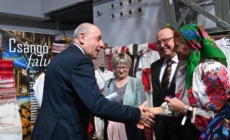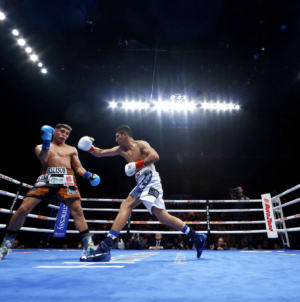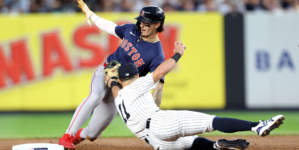-
Astros vs. Guardians Highlights | MLB on FOX - 5 mins ago
-
President Sulyok Visits Csángó School in Romania - 9 mins ago
-
How to Watch Padres vs Brewers: Live Stream MLB, TV Channel - 46 mins ago
-
LIV Golf Virginia: Second Round Highlights | LIV on FOX - 49 mins ago
-
How to Watch Red Sox vs Yankees: Live Stream MLB, TV Channel - about 1 hour ago
-
Red Sox vs. Yankees Highlights | MLB on FOX - 2 hours ago
-
Trump Deploys National Guard to LA Amid Immigration Protest Clashes - 2 hours ago
-
Padres vs. Brewers Highlights | MLB on FOX - 2 hours ago
-
How to Watch Indiana Fever vs Chicago Sky: Live Stream WNBA, TV Channel - 3 hours ago
-
Could Mauricio Pochettino leave USMNT for Tottenham?: ‘It’s not realistic’ - 3 hours ago
A splendid weekend getaway at Croatia’s Krk island
The time-honoured Krk Island sits in the northern Adriatic Sea, 50 kilometres from Rijeka, the nearest city on the mainland. Krk is the most populous island in the Adriatic region with some 20,000 people and comes as a popular tourist destination.
Like most Mediterranean islands, this sunshine-filled spot is rocky and hilly but there are some forests and cultivable fields. But palm trees, bougainvilleas, oleanders and anything similar tend to rule over its towns and provinces. Needless to say, there are plenty of sandy beaches also along the island’s 280-kilometre coastline. Tourism is the main industry, boosted by excelling local cuisine, a wine industry, plenty of fishing and much more. Krk Island is also referred to as a commendable health resort.
The island and its capital, with both sharing the same name, date right back to Illyrian and Roman times. Roman relics can be seen today in the region, with occasional mosaics in some houses and a temple to the goddess Venus. This is near the small gate (Mala Vrata) in the old city and dates to the 1st century BC.
There was once a sizeable Italian community in the Krk region but Italy passed this island to Yugoslavia in 1921. It was then the town itself was officially called Krk for the first time. Many Italian-speaking residents soon left for Istria and mainland Italy. Yugoslav partisans liberated the place in 1944. Finally Croatia declared independence on 25th June 1991, then joined the European Union in 2013 and both the eurozone and Schengen border treaty on 1st January 2023.
I was fortunate to be invited to Krk this springtime. My first stop was Malinska, a quaint coastal town with a small harbour in the north-western part of the island. It has a picturesque old town, with the St. Nicholas church as the main landmark, and everything faces the bay, where smallish boats of many kinds are anchored. Certainly, all these attributes create an enlightening atmosphere, and thus Malinska, with its obvious restaurant and bar scene, provides all the essentials and makes a great introduction. The DUBoak Maritime Heritage Interpretation Center comes as a museum and help point. See www.tz-malinska.hr.
Our press trip consortium consisted of Branka Fugosic, a local tour guide, and three journalists from Austria, Slovakia and England, and the following day we were shown around Krk, the capital and main cultural and administrative centre. It was interesting to see, beyond the early morning laid-back café scene, that as soon as one walks around the old town centre one enters the intriguing Frankopan territory (Croatian aristocrats of the 11th to the 17th centuries), and a history enveloped by town walls that clearly date over two millennias. It’s an intriguing walk around this preserved medieval centre which also was, not too surprisingly, a market square and finally leading on to the equally splendid nearby Kamplin Square and Francopan Castle.
Probably for most first-timers there, such as myself, the most notable landmark, beyond the old walls that pre-date Christ and the general centre, is the enchanting Krk Cathedral of the Assumption of Mary with its octagonal onion-shaped dome and trumpet-blowing angel perched atop and overlooking all around. The original church was built in the 5th or 6th century, but archaeological evidence suggests that the site was established by Christians as early as the 4th century. It’s clear to see that this elevated site was chosen, dominating the entire bay. Next to the cathedral are several sacred buildings, the most famous of which is the double church of St. Quirin and St. Margaret.
The cathedral owes its present-day appearance to the Romanesque style, as it was rebuilt mostly in the 11th and 12th centuries. The cathedral, with its impressive interior, has fourteen columns, twelve of them having Corinthian capitals, while one capital in the southern row is classical and one (nearest the altar) in the northern row is early Christian. For this and more, click here www.visitkrk.city.
Next was a short drive south to Punat and an equally brief boat ride across the twinkly blue sea to visit a renowned monastery on the very sequestered and reposeful Košljun Island.
As our follow-on tour guide, Vesna Depope, explained, although the island has a history to the 11th century when it hosted Benedict monks, the monastery now has numerous Franciscans, the latter arriving in the 15th century, and they live there all year round. The monastery has an impressive Shakespearian-style courtyard, plus a museum, a church dedicated to St. Mary of the Annunciation, and three chapels – the Holy Nativity, the Holy Cross (St. Jerusalem) and St. Francis.
The Ethnographical museum has an impressive exhibition of agricultural tools used on Krk soil in bygone times, folk costumes, photographs and much more. The Franciscan monastery is best known for its rich library of some 30,000 books, with the oldest from the founding of the community. The oldest incunabula, as early books are termed, is from 1471, and there is one of only three remaining copies of the first Ptolemaic atlas, which was published in Venice in 1511.

A stay at the monastery can be arranged for those in search of spiritual repose. Certainly it was a pleasure to visit and briefly rest one’s weary self when there. In the summer the monastery staff host classical and religious music events. For this and more, see www.kosljun.hr.
After a walk around the serene gardens, we returned to the Krk harbour followed by a pleasant late lunch at the Nada restaurant in Vrbnik, a few kilometres from the main town on the opposite eastern side of the island.
To reach the restaurant we had the pleasure of walking through another vintage old town, this one more than nine hundred years old. Vrbnik sits on a 49-metre-high cliff where the immediate views of the sea and mainland are glorious. On this height the houses of the old town are closely placed and central to the prominent 30-metre-tall 1527 Renaissance bell tower. The interwoven labyrinth of narrow cobblestoned streets leads to Klančić Street, famed as one of world’s narrowest – so much so that I only managed to squeeze by. Certainly no two people could ever pass each other in such confines, as they vary from 40-50 centimetres wide and about 10 metres long.
The homely Nada restaurant with its grandiose sea-view and welcoming breezes provided the press crew with a healthy and fortifying lunch consisting of mostly seafood of many varieties, pasta, fine wines and desserts. All comes highly recommended. For this and more about the town, see www.vrbnik.hr and www.nada-vrbnik.hr.
Late in the afternoon we made our way for a brief ice-cream stop at the lesser known Omišalj, the northernmost town on the island. It’s not so familiar because most of the tourist traffic passes by and proceeds to the better-known southern districts. Thus Omišalj enjoys a quieter time during the tourism peaks. Once again, the streets are lined with quaint olde-worlde-style buildings that make wonderful sightseeing which is the equal of elsewhere. Unfortunately our time there was brief, so Omišalj must be remembered for another visit, another time. See www.visit-omisalj-njivice.hr.
By now we had completed a significant circle around much of this glorious island. Our final event that day took us back to Malinska, to supper at the excelling Konoba Bracera fish restaurant. This was an extraordinary experience delivered by expert chefs and connoisseur staff alike. Let the photographs say it all rather than amateur me. The cuisine was superb to say the least, and the ingredients were remarkable, with seafood obviously fresh from the water that very day. There are no traces of supermarket or mass production in anything served up in this family-run business. It was all tailor-made to perfection and was a night to remember for sure. This delectable locale comes highly recommended too. See www.bracera-malinska.com.
It was a real pleasure to take part in this introductory tour. Although the time spent there was a little short, it was very worthy of recognition. I very much enjoyed the certainly more relaxed and spirited Mediterranean lifestyle, where one really can party by the coastlines until dawn. I now know where to head for when it comes to next time, for surely I will return.
To get there from Budapest by car is relatively easy. Make your way from the Hungarian capital to the M7 motorway, which then passes Lake Balaton. Cross the open border into Croatia and head directly along the A65 towards Zagreb. From there proceed further southwards towards Rijeka. Turn off a short while beforehand and make your way directly in the Krk Island direction. When approaching, drive over the bridge onto the island and proceed to your end stop.
At time of writing, this 520-kilometre journey from Budapest to Malinska took me about eight hours to achieve.
Special thanks goes to Majda Sale at the Krk tourist board for arranging this and our hotel. See https://www.visitkrk.com
Source link






























